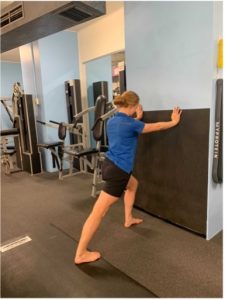Bell’s Broadcast: Active vs Passive recovery? What is the best form of recovery?
After we partake in exercise, it is important to allow our body the opportunity to recover. It is said to be even as important as the exercise itself. When recovery is not done right or at the right intensity it can lead to problems such as inflammation, lactate build-up, and overuse injuries. But the recovery process isn’t as straightforward as it seems, and there are two major types of recovery that you need to consider: active and passive.
Today, Annabel and the Longevity Exercise Physiology teams at Drummoyne, Edgecliff, Marrickville, Bella Vista, Randwick, Pymble, Balmain and Neutral Bay explore the different forms of recovery and what is the best form to partake in after you do physical activity.

So, what is the difference?
When performing active recovery, it involves an individual using non-strenuous physical activity to stay moving and keep bodily fluids such as blood and lymph, flowing throughout the body. It usually involves a routine composed of easier exercises. This reduced intensity of the workout is intended to keep your ability levels from dropping, while still giving your body time to recover. In comparison, passive recovery is when an individual uses complete rest to give the body a break, with as little physical exertion as possible. This type of recovery gives your body a rest without having impact on your body. It allows your muscles to have time to repair themselves and in addition, give you a mental break. Passive recovery can involve activities that cause you not to exert yourself including a steam room, cold water immersion or massage (“Active Recovery or Passive Recovery – What’s Better?”, 2022).
“Active recovery involves non-strenuous physical activity to stay moving. Passive recovery gives your body a rest without having impact on your body”
The advantages of performing active recovery over passive recovery, is a large focus on the chemical processes that happen within the body. Blood flow and lymph fluid flow are both helpful in the recovery process. When performing active recovery, it shows to help clear metabolic waste from the body faster than just partaking in rest. But an advantage that is often overlooked is that the reduced activity that active recovery provides is that it gives people the opportunity to focus more on their technique of the exercises. This allows for greater improvement in their overall skill and can prevent them from exercising with incorrect form over long periods of time (“Active vs Passive Recovery – Which Should You Use? – PhysioCentral”, 2022).

Passive recovery is helpful for individuals when their fatigue levels are high both physically and mentally. A study suggested that passive recovery is important in endurance athletes because it reduces fatigue, thus enhancing performance. The mixture of both active and passive rest could also be implemented into your training week. It is important for recovery to take at least one day of the week for complete passive rest. And it is as much a mental break as anything. If you are sick, injured or physically/mentally need a break, passive recovery is the way to go. The best time to go on passive recovery mode is the day after an intense training or workout. Listening to what the body is saying is also crucial. Stop and rest when needed (Farrar, 2022).

Now taking into consideration the benefits of both types of recovery and the research behind them according to the physical and chemical effects on your body, there is a clear winner: active recovery. To back this up, one study looking at recovery in runners found that active recovery enabled them to run three times longer during their next run compared with those that used passive recovery. Additionally, another study examining swimmers showed that active recovery dissipated 68% of the lactate that had accumulated in their blood and would have otherwise settled in their tissues (Tadeo, 2022).
“Active recovery dissipated 68% of the lactate that had accumulated in their blood”
Recovery is an essential part of your exercise regime.
If you want someone to assist you in planning the best recovery after your exercise session, give Longevity Exercise Physiology Edgecliff, Pymble, Marrickville, Randwick, Drummoyne, Balmain, Bella Vista, and Neutral Bay a call on 1300 964 002.
Written by Annabel Bergman
References:
Active Recovery or Passive Recovery – What’s Better?. (2022). Retrieved 30 June 2022, from https://runnersworldonline.com.au/active-recovery-passive-recovery/
Active vs Passive Recovery – Which Should You Use? – PhysioCentral. (2022). Retrieved 30 June 2022, from https://physio-central.com/blog/active-vs-passive-recovery-which-should-you-use/
Farrar, J. (2022). Which Is Better, Active Or Passive Recovery?. Retrieved 30 June 2022, from https://www.thephysiocompany.com/blog/2019/3/4/which-is-better-active-or-passive-recovery
Tadeo, J. (2022). Active Recovery Versus Passive Recovery: Which Is Better for Athletes? – HYDRAGUN Blog. Retrieved 30 June 2022, from https://blog.hydragun.com/active-recovery-versus-passive-recovery-which-is-better-for-athletes/
